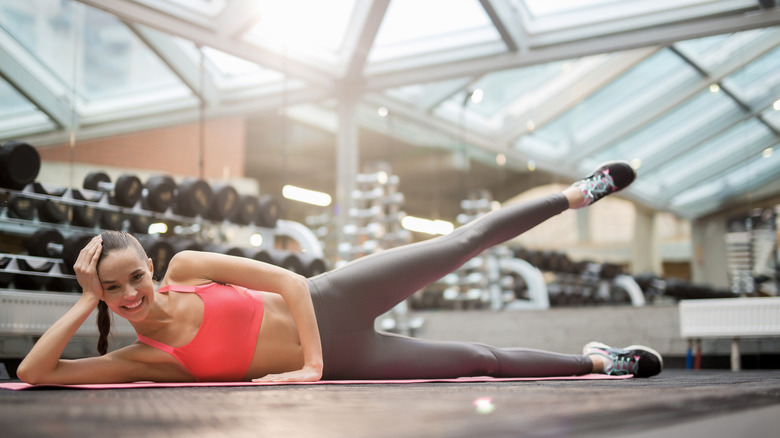The Best Exercises For Knee Pain
Choosing the best exercises for knee pain can be tricky. For example, you might have heard that squats can benefit those with bad knees. "If done correctly, squatting is well tolerated by people with osteoarthritis of the knees," physical therapist Cynthia Harrell told the Arthritis Foundation. But this functional movement may also worsen your symptoms. Harell explains that squatting "can be painful for sore knees" if performed incorrectly. Other factors, such as being out of shape or overweight, can pose further challenges.
To stay safe, start with basic knee exercises and then gradually increase workout duration and frequency. Focus on strengthening the muscles around your knees, such as the quads and hamstrings. You also want to target the hips, which play a key role in everyday movements. Weak hip muscles can put extra stress on your knees and exacerbate the pain, said sports medicine specialist Dr. Lauren Elson in an interview with Harvard Health Publishing.
Most importantly, stick to your workout routine. A sedentary lifestyle can affect joint and muscle function, leading to further complications. Dr. Elson recommends a combination of stretching and strengthening exercises that require no equipment. As you progress, you may incorporate resistance bands and other accessories into your workouts to make them more difficult.
Try these exercises to relieve knee pain
Sports medicine specialist Dr. Lauren Elson recommends performing side-leg raises and single-leg lifts at least twice a week (via Harvard Health Publishing). These simple movements engage your quads, hamstrings, glutes, adductors, abductors, and core muscles. The side-leg raise requires lying on your side with your legs extended. Brace your core, lift your top leg, pause for a few seconds, and then slowly return to the starting position. As you get stronger, wrap an elastic band around your upper tights for increased resistance. The single-leg lift involves a similar movement pattern, but you'll lie on your back.
The American Academy of Orthopaedic Surgeons explains that single-leg dips, hamstring curls, step-ups, and wall squats strengthen the muscles that support your knees. Over time, they may improve knee function and ease the pain. Regular stretching is just as important, says Dr. Elson. Tight quads or hamstrings can affect knee function, causing pain and limited mobility. Ideally, perform three to four repetitions of quadriceps and hamstring stretches — and hold the contraction for 10 to 30 seconds for each rep.
You may also use a foam roller to gently massage your calves, hamstrings, hip adductors, and iliotibial band, suggests the National Academy of Sports Medicine. Aim for 30 to 90 seconds of foam rolling per muscle group to reap the benefits. Just make sure you avoid the area behind your knees. Instead, focus on the muscles above and below the knee joint.

